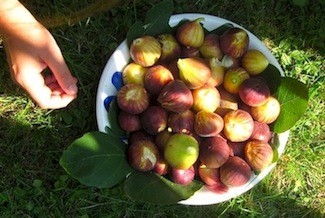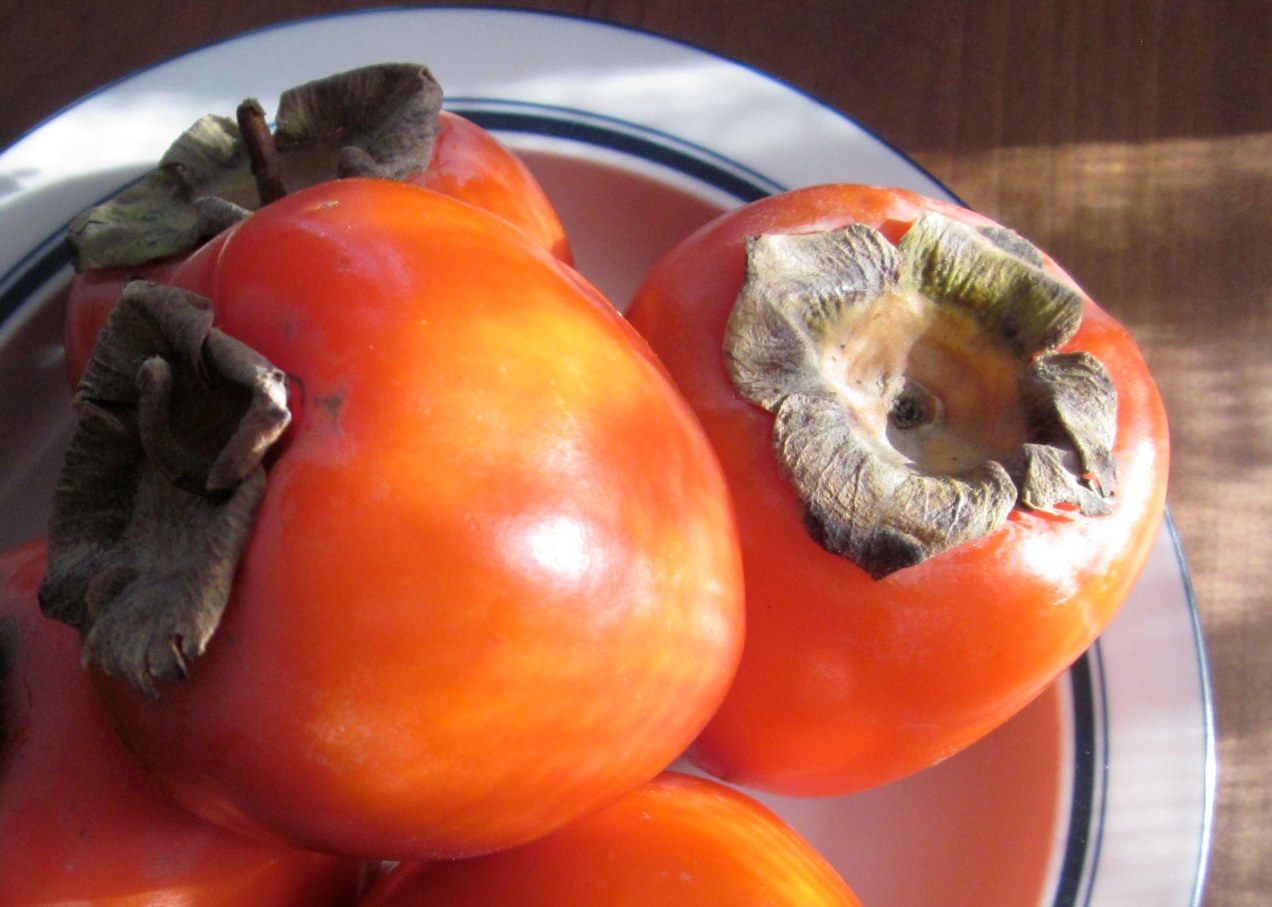Not much has changed since I was a youngster – you can still find me in the kitchen, though I’ve graduated from my Tupperware mixing bowl:
One thing that has changed, however, is my love for persimmons.
Whenever my parents and I travel to Northern Italy for Christmas, persimmons are nearing the end of their season, still persistently lending their festive red-orange color to otherwise bare yards. Throughout the season, from October to December, they’re so plentiful and are literally falling off trees, dragging down branches with their plump promises of sweetness. By the time we roll into town, friends and family have already reached the limit of how many persimmons they can possibly stomach. Knowing my dad’s unfailing love for the fruit, the neighbors promptly start their procession with overflowing baskets over to my aunt and uncle’s house, relieved to be handing over the torch.
Maybe I was too distracted by the panettoni and pandoro, or maybe there just weren’t any left after my dad got to them, but for some reason I never appreciated persimmons until recently. They’re part of the shrub and tree genus Diospyros, a Greek word that translates to “divine food” or “fruit of the gods.” And rightly so – they taste like an otherworldly mix of apricots and honey.
Though their high price may dissuade you from buying them on a whim, persimmons are becoming more widely available in grocery stores here in the U.S. The two main varieties you might find for sale are Hachiya (above) and Fuyu. Small and squat, similar in shape to a tomato, Fuyus can be eaten just like an apple, skins included. Hachiya persimmons, on the other hand, are only edible when they become very soft, almost mushy, otherwise they’re too bitter. It’s not recommended to eat their skins, though my dad is undeterred by them – then again, he’s also known for eating the entire apple core, seeds included. I find they taste sort of cottony and opt to do without, scooping out the inside with a spoon.
Persimmons are so richly sweet that they are plenty decadent on their own, without any extra flourishes. Even so, I came across a dessert idea in this month’s Bon Appetit that piqued my interest, and it has become a new favorite:
Persimmons with Greek Yogurt, Honey & Pistachios
Simply spoon some Greek yogurt in a bowl, top with persimmon slices and crumbled pistachios, and drizzle with honey.
The tart yogurt cuts the sweetness of the persimmon and honey beautifully, and the pistachios chime in with an unexpected crunch. The combination is a nice antidote to all the heavy holiday fare this month. Forget the berries with ice cream you may be missing from summer – this will make you glad to hunker down and welcome winter.




